SURROUNDINGS OF PUEBLA CITY
Explore the Surroundings of Puebla City
Puebla has everything for that escape you long for, with its cloud forests, mountains, hot springs, waterfalls, rivers, lagoons and even volcanoes, together with its magical towns, its gastronomy and its culture. You don’t need to cross borders, board a plane or travel whole days by road to enter paradise. There are many places near Puebla to visit and enjoy. The surroundings of Puebla and its natural beauties are countless, the imposing Popocatepetl volcano, an excellent climate, the colorful markets, its flavors and textures, and the smile of a local child that makes you feel at home is never lacking.
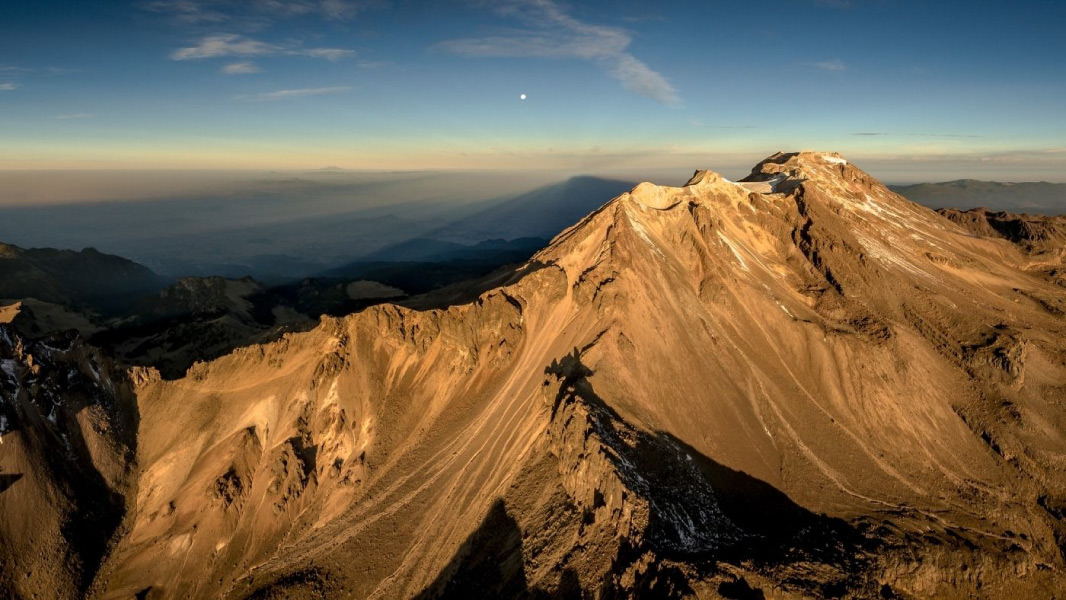
Map of Surroundings of Puebla City
Sierra Norte, Magic Mountains
The Sierra Magica de Puebla (Magic Mountain Range), invites you to enjoy majestic natural landscapes with forests, meadows, rivers and fantastic capricious rock formations; as well as picturesque villages with rich ancestral culture who well preserve tradition without surrendering to modernity.
This cultural mosaic can be seen in architecture, gastronomy, handicrafts and healing methods. The Sierra Magica comprises several villages and includes four routes that offer options for all tastes.
Villages of The Sierra Mágica
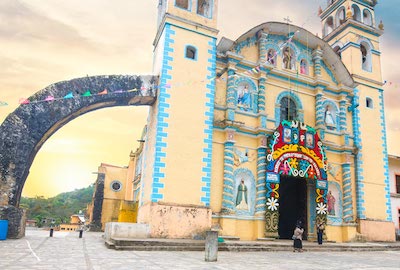
Ahuacatlán. There you can visit the Church of San Miguel (now San Juan Bautista), the Municipal Palace (from the 16th century), located in the municipal seat.
Ahuazotepec. The town square is a nice gathering place where most of the celebrations take place. You can visit the Parish of San Nicolás Tolentino built in the 16th century.
Aquixtla. It has a parish church dedicated to St. John the Evangelist, with a nice Baroque style built in 1864. Nearby is “Salto de Tepexcanal” an impressive 70 meter high waterfall with a shallow clear blue waters at its base.
Chignahuapan. It is full of color and charm, as the sun rises it illuminates the thousands of christmas spheres exhibited in all the stores, objects that have given the town international fame. Its brightness contrasts with the traditional architecture of its houses and temples. (Magic Town)
Francisco Z. Mena. Typical town of the northern mountain range of Puebla surrounded by a beautiful landscape.
Honey. On Sundays there is a colorful weekly market. Nearby is the Eco-Tourist Rainbow Park, with 10 waterfalls that run along 10 km., and one of most beautiful falls in the gorge is the Cascada del Arcoiris (Rainbow Waterfall) with a height of 20 m, the waters plunge down into a dazzling natural pool. Beautiful place to camp!
Ixtacamaxtitlán. You can visit the Ex-convent of San Francisco Ixtacamaxtitlán built in 1542 and be amazed for the truly baroque style and some mural paintings from the 18th century that have been preserved. The Church of San Francisquito is located on top of a cliff of natural formation, and is believed that there was a pre-Hispanic shrine in the same place. There is also a Community Museum.
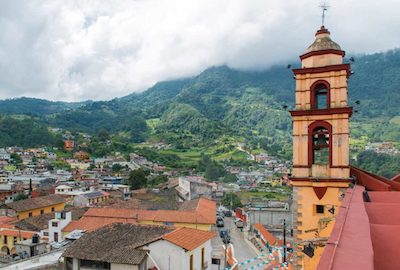
Tetela de Ocampo. One of the most important attractions is the Parish of Nuestra Señora de la Asunción was built in 1808 and is the tallest building in the town. It faces the main plaza or “zócalo” with a nice garden. In front is the municipal palace built in the French style, and inside is the Los Tres Juanes Museum, with an exhibition related with archeology and ethnography.
Near is La Cañada is a small mining town, this was the first mine exploded by the Spaniards and the Tlapalcalli Museum, where paintings and sculptures by Rafael Bonilla are exhibited. In the nearby community of Xaltatempa de Lucas are the Aconco waterfalls; and in Carreragco are located the Grutas de Acocomoca, the Grutas de Carreragco, the Grutas de Nanahuatzingo, and the Grutas de Tempextla a cave system.
Xicotepec. It is located in the northern part of the state of Puebla, and in 1920 Mexican President Venustiano Carranza was assassinated in the village near Xicotepec and during the time of the official autopsy (three days), the town was temporarily named the capital of the Mexican Republic. The town has a lovely main plaza with different types of trees and surrounded by set of colonnaded arches where you can smell the fresh brewed local coffee. (Magic Town)
Xochiapulco. There are several viewpoints to admire the amazing breathtaking landscape. Nearby is the La Gloria Waterfall, 30 m high. There is a Community Museum narrates the role of the town during the French Invasion.
Zapotitlán de Méndez. It is a community surrounded by coffee plantations and natural wonders such as the Cruz de Agua waterfall and the Karmidas Caves. In the downtown is the Parroquia de la Natividad de la Virgen María (Parish of the Nativity of the Virgin Mary) built in the 18th century.
Naupan. It offers beautiful views and natural attractions, such as the Uankax caves and the Tempach and Citlalá caves. This municipality still preserves its Nahuatl roots with a set of beliefs and traditions typical of the place.
Zacatlán. Surrounded by innumerable natural beauties, nestled in the highest part of the Barranca de los Jilgueros it is surrounded by forests covered with fog and fertile fields with fruit trees. The name “Zacatlán” comes from the Nahuatl, it thus means “place of abundant zacate”. It is renowned as one of the country’s foremost apple-growing regions.
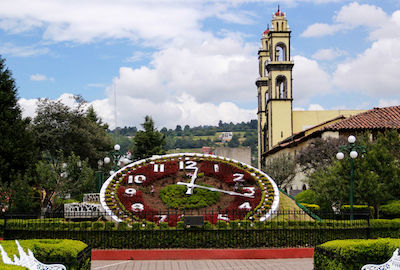
This is a place of tradition, warm hospitality, artisan crafts and ethnic cuisine. It is surrounded by a number of natural beauties and it has a rich gastronomy, including cheese filled bread, fruit preserves wines and “sidra” (a fermented alcoholic beverage made from apple juice). (Magic Town)
Pahuatlán. It has been designated “Magic Town”, because of its ancient culture and mysticism. It is a town with cobbled streets and houses with red roofs where you can buy beautiful works of chaquira and medicinal plants. (Magic Town)
Nuevo Necaxa (Juan Galindo). It takes its name from the Necaxa Dam, you may see the hydroelectric dam building that dates back to the early 20th century. There is a hotel and some restaurants along the dam and it is a nice place for boat trips and fishing.
Huauchinango. Surrounded by natural beauties, this colorful town has a nice central plaza. It is famous the Flower Fair held at the end of February. (Magic Town)
Tlacuilotepec. It is a town known by its delicious coffee its captivating mountain scenery. You can visit the 17th-century church.
Route Of Handicrafts
Aquixtla, Chignahuapan, Huauchinango, Pahuatlán, Xicotepec, Xochiapulco, Zacatlán.
There is no better place to know the creations of the local artists than in the craft markets. You can learn how to make amate paper in the community of San Pablito near Pahuatlán and know its relationship with the myths of the shamans.
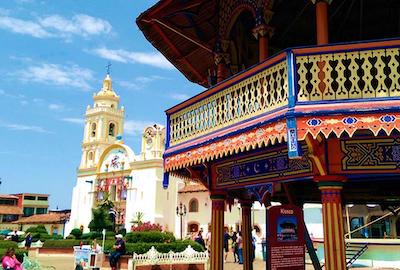
Surprise yourself with the colorful spheres of Chignahuapan, or acquire a piece of organic jewelry from Xicotepec made from walnut shell, coconut, tamarind seeds, cinnamon flower, just to name a few.
Route to Wellness
Chignahuapan, Huauchinango, Pahuatlán, Tetela de Ocampo, Zacatlán.
The Sierra offers thermal waters, temazcales, spas and ancestral rituals with a unique magic. The Nahua, Totonaca, Tepehua and Otomi communities have particular methods of healing and native shamans that will help you to find peace of mind, calm and tranquility.
The route offers various options such as: steam baths or temazcal to relax and purify the body; the hot springs of Chignahuapan; the medicinal waters of the caves of Acocomoca in Tetela de Ocampo; the enigmatic ceremonial center of Xochipila in Xicotepec, where ancient rituals of purification are celebrated; treatments with medicinal plants; as well as meditation and yoga courses.
Route of Gastronomy
Ahuacatlán, Ahuazotepec, Aquixtla, Chignahuapan, Francisco Z. Mena, Honey, Huauchinango, Ixtacamaxtitlán, Nuevo Necaxa, Naupan, Pahuatlán, Tetela de Ocampo, Tlacuilotepec, Xicotepec, Xochiapulco, Zacatlán, Zapotitlán de Méndez.
In addition to the rich and varied cuisine that includes rich mountain delicacies, you are going to enjoy your meal in the middle of a beautiful landscape. The cooks are always willing to unveil their secrets so you can learn how to make the traditional dishes of the region such as: tlacoyos (oval shaped fried or toasted cakes made of masa, stuffed with refried beans, dry cheese, fava beans, chicharron or other ingredients), tamales, special bread and mole.
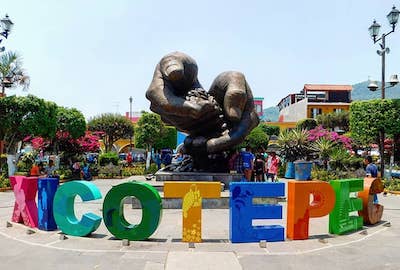
If you want to taste different tastes and flavors you may try exotic dishes such as the chicalés (ants) of Pahuatlán and Xicotepec, the escamoles of Ixtacamaxtitlán and the Yolixpa of Xochiapulco, famous for its healing powers.
In Zacatlán you could try cider and pulque, also known as “the Drink of the Gods”. In Zacatlán and in Chignahuapan there are guided tours to learn how pulque is made and about its history, and of course you may try this ancient pre-Hispanic fermented beverage. In Xilotepec and Pahuatlán you may savor a good organic coffee, and you can also explore the coffee plantations and learn about the coffee-making process.
Route of Nature
Ahuazotepec, Chignahuapan, Huauchinango, Tetela de Ocampo, Zacatlán, Zapotitlán de Méndez.
The Sierra is full of incredible landscapes and offers all kinds of experiences for adventure lovers. Near Zacatlán you can visit the Barranca de los Jilgueros (awesome gully) with splendid panoramic views of the region and the Valle de las Piedras Encimadas (Stacked Stones), a beautiful place to go horseback riding.
For those interested in exploring the hidden world below, the Karmidas Caves are located in Zapotitlán, while in Tetela de Ocampo are the Carreragco Caves.
Sierra Nororiental
Cuetzalan. It is a picturesque town located in a mountain range with beautiful cobblestone streets and redtiled roofs. Cuetzalan offers a mix of pre-Hispanic and colonial attractions, distinguished by the mist that runs through its streets and mountains covered with beautiful vegetation. (Magic Town)
Zacapoaxtla. The town lies in a magnificent mountain countryside, and you can visit the Municipal Palace, built in 1890; the Xolalpancalli Regional Museum with an exhibit of pre- Hispanic pieces and some other artifacts of Zacapoaxtla history; the Parish of San Pedro Apostle built in the 16th century in a neoclassical style; the Shrine of Guadalupe, with a beautiful interior decorating; the Church of Esquipulas, beautiful building devoted to the Black Christ of Guatemala; Apulco, fish center that can be visited prior authorization; the 35-meter waterfall “La Gloria”; the waterfall “La Olla”, a beautiful place for camping; the waterfall “Velo de Novia” (Bridal Veil), located about 10 kilometers down the Apulco River; and Apulco Ranch, where diverse fruit wines are produced.
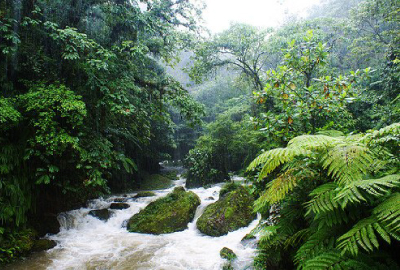
Jonotla. You can visit the chapel dedicated to the Virgin of Guadalupe, that was built around a sacred image in stone that was discovered in October 22, 1922, and since then is celebrated each year; the Church of St. John the Baptist, built in the 16th century; the natural spring in the Apulco River; the Peñón de Jonotla, the view from the top is spectacular in all directions, and is one of the most important sanctuaries for the indigenous people in the region; and the Jonotla Grottos, only 2 kilometers far from the town. There is also a library with an interesting exhibition of marine fossils found on the Peñón de Jonotla.
Tlatlauquitepec. It is a picturesque town that has several attractions like: the Ex-Convent of of the Assumption of Mary, built in 1531 by the Franciscan Order, what makes it the oldest of its kind in Latin America; the beautiful main square, with a variety of trees and flowers surrounded by surrounded by various portals where you can taste the delicious cuisine of the place; the Municipal Palace built in the late 19th century; the Church of the Sacred Heart of Jesus, with beautiful paintings; the Sanctuary of the Lord of Huaxtla, where they worship a carved wood statue made in 1701; the Cerrito de Guadalupe, with a 19th century church and a magnificent 40-meter high waterfall. (Magic Town)
Hueyapan. The town is famous for its brightly embroidered woolen pieces. Around its central plaza, you will see the workshops where the women work on these articles. Other attractions are: the Chapel of Santa Filomena and the Church of Santo Patrón San Andrés Apóstol.
Serdan Valley
Ciudad Serdán. You can visit an ancient aqueduct of the colonial era and the Church Jesús de las tres Caídas. It is the starting point for most climbers attempting El Pico de Orizaba.
San Nicolás de Buenos Aires. Small town, known as the “Capital of the Taco” by the fair that is held here every year.
Nopalucan. Church of Santiago Apóstol dates back to 1691 and has beautiful altarpieces.
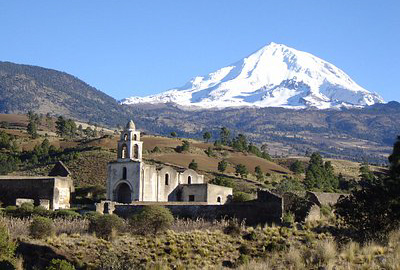
Oriental. There are wheat-growing haciendas like: Tlapaleca, Teoloyucan, Virreyes, among others.
San José Chiapa. You can visit the Parish church of St. Joseph built in the 17th century; and three haciendas: Ojo de Agua, Ozumba and Vicencio; the ancient San José Chiapa Hacienda has a beautiful chapel from the 17th century. The Tololcingo Lagoon offers a nice landscape with many birds like Canadian ducks and cranes.
Acajete. You can visit the Main Square, the Parish built in the 16th century, and Malintzin National Park with beautiful woods and countless camping areas.
Tepeyahualco.The town has several colonial buildings like the Church of San Pedro Apostle from the 16th century, and the Ermita de San Pedro or Tepeyahualqui built in 1668. There are several 19th century-haciendas like: Micuautla, San Roque, San Jose Tizaco, Tetipanapa, Tezontepec, Jalapasco, La Cofradía and De Soto. Seven kilometers away is the archaeological site of Cantona, the largest pre-Hispanic city yet discovered in Mesoamerica. Nearby is the Alchichica Lagoon, a salt water lake in the crater of an extinct volcano, ideal for swimming and fishing. You can also visit other lakes as Precious and Quechulac where you cah fish charales and rainbow trout.
Libres. You can visit the Church Church of St. John the Baptist, the building dates back to the 18th century and it is considered a Baroque jewel; not very far from Libres there are some 12,000 year old petroglyphs in Rancho Viejo; colonial aqueduct named “Los Arcos”.
Valle de Atlixco y Matamoros
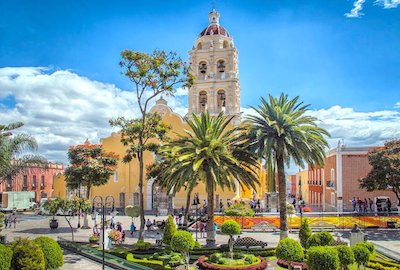
Atlixco. It is also known as the City of Flowers and lies at the foot of Popocatépetl, next to medicinal springs, spas and spectacular views of the majestic volcano. The claims to have the best climate in the world and you can visit its colorful nurseries filled with an enormous diversity of flowers. (Magic Town)
San Andrés Calpan. Visit the Ex-convent of San Andrés with fabulous chapels. In August is the Chile en Nogada Fair.
Huaquechula. Visit the Franciscan Ex-Convent dating back to the 16th century; the Church of Martín Obispo and the main square that displays vestiges of the town’s history.
Metepec.The small town is on the slopes of Popocatepetl. It used to be an important textile production center. Today there is a nice resort, Centro Vacacional IMSS. There are fish hatcheries and ponds, ideal for fishing trout, with a restaurant and camping areas.
Mixteca Route
Izucar de Matamoros. Visit the Santo Domingo Ex-Convent built in 1612 beautiful Churrigueresque style altarpieces; the Church of Our Lady of the Assumption, with a wonderful Baroque decoration; the Church of Santiago Apostol, with magnificent Baroque style altarpieces; the Portal Hidalgo built in the 16th century; the Municipal Palace with a clear colonial style built in the 16th century; the San Juan Colon and San Nicolás Tolentino Haciendas, both were important sugar cane producers during the 17 th and 18 th centuries; the aqueducts that were part of the 14 large colonial sugar haciendas; and the sulfur springs like San Carlos and the Amatitlanes.
Izucar is known for the elaboration of Trees of Life (a hand coiled pottery sculpture depicting the biblical Tree of Life, very colorful and intricately decorated pieces) and decorated candles made out of beeswax, both traditions date back to the colonial era.
Tlapanalá. Visit the Tepapayeca Ex-Convent, 16th-century monumental construction; the the double arc aqueduct named Matlala, built in the 19th century; the San Luis Chalma Hacienda, dating back to the 16th century; Tepapayeca, an archaeological zone with small structures; and the natural spring named “Ojo de Carbón” (Eye of Coal), where you can swim.
San Juan Epatlán. Visit the Church of the Virgin Mary; the Epatlán Lagoon, an ideal place to fish and to take boat rides, there are small cabins and restaurants where where you can enjoy the best fresh fish of the region; and the “El Huarache Pintado” and “El Resbaladero” archeological sites.
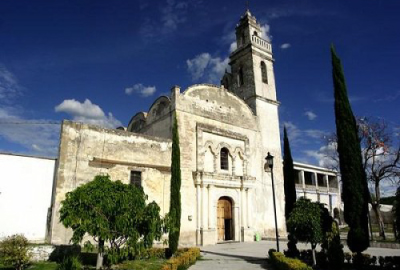
Huatlatlauca. The town is full of beautiful churches like: the Ex-convent, a magnificent construction started by the Franciscan friars and endend by the Augustinian friars in the 16th century; the Church of Padre Jesus, built in the 16th century; the Church of St. Peter and St. Paul, constructed in the 18th century with a beautiful altarpiece and paintings by by the colonial artist Juan Correa; the Chapel of San José, a 16th- century temple with a clear Plateresque style; the Chapel of San Francisco, built by the Franciscans in the 16th century, the interior displays paintings by Juan Correa; the Chapel of La Candelaria, from the 16th century; and the Chapel of St. Nicholas Tolentino, from the 18th century.
Acatlán de Osorio.Visit the Church of St. John the Baptist built in the 17th century, the Calvario Church (Calvary); the Regional Museum; the El Zapote archaeological site; and the Solar Marble Clock.
Chietla. Visit the Church of San Francisco, dating back to the 16th century and the thermal springs.
Chiautla de Tapia. Visit the San Agustin Ex-Convent, built in the 16th century; the Municipal Palace, an ancient colonial building; the Cristo Rey Church (Christ the King); the Sun Clock; and the Cerro de los Judíos (Hill of the Jews) with cave paintings.
Santa Clara Huitziltepec. You can visit the Santa Clara de Asis Church, built in the 17th century.
Chigmecatitlán. You can visit the Church of San Antonio dating back to the 16th century and the Crafts Museum which houses one of the finest collections palm handicrafts in miniature.
Atoyatempan. Visit the Church of the Divine Savior dating back to the 16th century, the Hacienda Poveda with a nice chapel; the Ex-Haciendas of Caloa, Acatzizimitla and Santiago; the Acatzitzimitla waterfall with three drops, the most spectacular is a 60-meter waterfall known as Cola de Caballo (Ponytail); Aconeti, a nice river; and Acatzizimit Canyon, with a splendid panoramic view of the region.
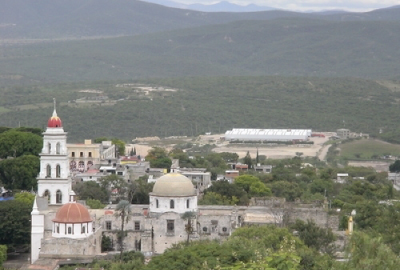
Tepexi de Rodriguez. The town has a nice main square and in front is the Municipal Palace built in the 16th century. You can also visit the church and Ex convent of Santo Domingo de Guzmán, its construction began in 1591, and in the interior is the image of the Lord of Huajoyuca, the most venerated Christ in the region; the Jesus Nazareno Hospital, built in the 16th century.
Only 8 kilometers far from the town is the Tepexi El Viejo archaeological site, it is naturally protected by mountains and canyons and is divided into five areas, the flattened top of the ridge was retained and expanded by the use of massive outer wall as that were as 15 meters (50feet), this height and the fact that they ere plastered were the major functional features of military construction at Tepexi.
The Tlayúa quarry, with a variety of fossils; the Paleontological Museum “Pie de Vaca”(Cow Foot), it reveals a treasure that the nature left behind millions of years ago, with a collection of more than 7,000 fossils amazingly well-preserved of fishes, turtles and corals; Axamilpa River has a nice natural spring. “The Moralillo” Tianguis is a tradition, it takes place every Tuesday and is the largest in the region.
San Juan Ixcaquixtla. The Church of St. John the Baptist with a Churrigueresque style; the “Licenciado Benito Juárez” Municipal Park, founded in the 19th century, has a nice gazebo covered with Talavera tiles; and a pre-Hispanic stele representing Mictlantecutli, god of the dead, located in a local school, are the main features in the town.
Tehuacán and Sierra Negra
Tehuacán
It is a place full of history, since it is precisely here where the vestiges of the domestication of the oldest maize (up to 5,000 years BC) have been found. Since Tehuacan was one of the sites of the Camino Real de Tierra Adentro (a Royal Inland Road used as a trade route for 300 years), the place has so some interesting buildings from the colonial era.
Its gastronomy is another reason to visit this town, you can try the “Mole de Caderas”, made with goat meat and bones with various condiments. In order to get the goats needed for this dish, there is a unique ritual that takes place from October 15 to November 15 called La “Matanza”, this festival includes artistic and musical events.
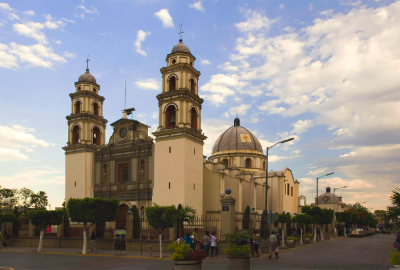
Among its tourist attractions are: the 18th century Cathedral of the Immaculate Conception, with beautiful stained glass windows and more than 130 angels decorating the interior of the church; the Church and Ex-Convento del Carmen which was built in Mexican Baroque style in the 18th century; the Church of Our Lady del Carmen, dating back to the 18th century; the Calvary Church built in 1759, with a Plateresque façade; the Ex-Convent and Temple of San Francisco, the construction of the complex started in 1592 and was completed in 1615.
The Municipal Palace, a 19th-century building with beautiful murals known as “Casa de los Altos”, for being the first two-story construction in Tehuacán; the Juárez Park, with grass areas and a gazebo, surrounded by restaurants and establishments offering traditional foods and sweets from the region; the Tehuacán Museum of Evolution where you can see the history of the region during the Mesozoic and Cenozoic eras; and the Tehuacan Valley Museum, which exhibits pre-Hispanic pieces of the region.
The city is famous for its springs with healing properties. You can also visit the Peñafiel Springs, underground galleries take you to the source of the famous Tehuacan mineral water, there is also the Tehuacan Hydromineral Museum, dedicated to the history of the spring; the Parque Aventura (Adventure Park) and San Lorenzo water parks with three large natural pools of mineral waters.
Other places that deserve to be visited are: the Adventure Park with swimming pools and a lagoon ideal for boat trips and fishing; the Club de Animalitos (Little animal club), a gem of a little zoo; and the “Helia Bravo-Hollis” Botanical Garden, it is located within the Tehuacán-Cuicatlán Biosphere Reserve with trails where you can admire more than 200 types of cacti,, most of them endangered species.
Popoloca culture settled here more than 1,300 years ago and there are some vestiges at the foothills of Cerro de Cuthá, like a lime kiln and a pre-Hispanic salina. Just 30 minutes from the city, on the banks of the Ahuelcan spring, is the La Mesa Archaeological Zone, also known as Tehuacán Viejo. The settlement belongs to popoloca culture and although it hasn’t been fully explore there are very interesting buildings like the Temple of the Skulls with a shrine dedicated to the ‘Lord of the Land of the Dead’ “Mictlantecuhtli” with rows of skulls made of stone and stucco, considered one of a kind.
Sierra Negra
Acatzingo de Hidalgo. In this town you can enjoy the main square, the portals, the ex-Franciscan convent of San Juan Evangelista, with its beautiful tile facade and inside the jewel of the Chapel of the Virgen de los Dolores with three magnificent baroque altarpieces.
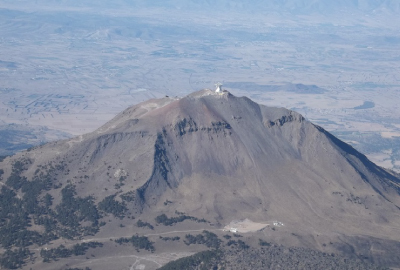
Tecamachalco. Visit the Calvary Chapel and San Sebastian Martir Church, built in 1732; the Parish of the Assumption dating back to the 16th century with beautiful paintings in its interior; the bullring is considered the first bullring of Viceregal Mexico; the Regional Museum exhibits pre-Hispanic pieces; the Franciscan Ex-Convent; and the Cerro del Águila (Eagle Hill), where the pre-Hispanic inhabitants formed an eagle with white “tepetate”, a kind of brittle volcanic rock.
Zapotitlán Salinas. Some of the most important features here are: the Church of St. Martin Bishop of Tours, a Baroque construction dating back to 1578; the Church of Calvary, built in the 16th century; the Martin Xopanatzin Community Museum, with archaeological and paleontological samples; and Cerro Pizarro Hacienda, built in the 19th century.
Nearby is the Cuicatlán-Zapotitlán Biosphere Reserve, a magical landscape with an impressive variety of cactus species; Tilapa, with big rocks and a small waterfall; the La Huerta Spring, known for its beautiful vegetation; and the archaeological vestiges of the ancient Popoloca culture near the hill Cutha, a sacred mountain for this culture.
San Juan Raya. You can visit the Community Museum of Paleontology; the San Juan Raya Ecoturistic Park, with fossils, dinosaur footprints and regional plants. There is also horseback riding tour or walking tours to an area full of giant cacti (Biznaga), and the main attraction is a colossal cacti over 3 meters high.
Natural Wonders in Puebla
Due to the natural richness of the state, there are a wide selection of activities for people who love nature, such as mountain climbing, photography, horseback riding, hiking, fishing, rafting (through rapids) speleology, hang gliding (delta and paraglide) cycling, camping and rappel among others.
Popocatépetl-Iztaccíhuatl National Park. This is one of the largest parks in Mexico. Along the way you’ll see spectacular forest vegetation and rich fauna. Its most notable sights are the Popocatepetl (17,958 feet), and Iztaccihuatl (17,226 feet). The park is ideal for trekking, mountain climbing, and camping.
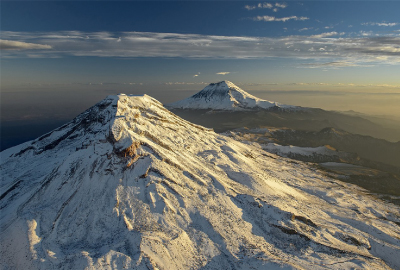
La Malinche National Park. The Malinche is the fifth highest elevation in Mexico (14,718 feet). Most of the area is covered with a pine and oak forest. The park has 5 species of amphibians, 11 species of reptiles, 77 species of birds and 27 species of mammals, five of them are endemic. This is a great place for camping.
Piedras Encimadas (Valley of the Leaning Rocks). This valley offers a unique and impressive landscape. It contains an infinity of stones with impressive figures sculpted by the nature millions of year ago with unusual and capricious formations.
Puente de Dios (God’s Bridge). The flow of the Atoyac River eroded the rocks of the Tenzo mountains creating a tunnel that looks like a bridge. You can enjoy this natural wonder and have a swim in the crystal clear waters of the river.
Centro Campestre las Truchas. This is a good place to enjoy the natural beauties of the Sierra Norte. There is a restaurant, camping zones and a children’s playground surrounded by lagoons, waterfalls and forest vegetation. You can go fishing, horseback riding and swimming.
Grutas Karmidas (Caves). They are located in Zapotitlán de Méndez and are probably the most spectacular visitable caves in Puebla. During the tour you will visit several halls to end up in the Enchanted Lagoon, named for the mirror effect where the calcareous formations reflected in the mirror like lagoon seem like an underwater city.
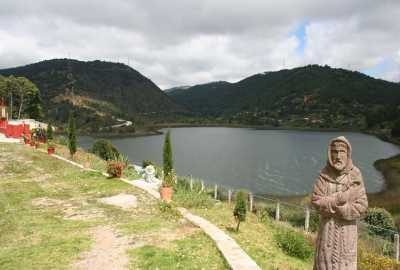
Lagunas de San Bernardino (Lagoons). These four lagoons are very close close to each other and yet separated by the Zongolica mountain range. Laguna Grande (Big Lagoon) is the most impressive not only because it is the biggest but also for the blue-green color of its calm waters. You can go for a ride in a boat or go fishing. There are some tourist services around this lagoon.
Cascadas de Aconco (Waterfall). They are located just 30 minutes from Tetela de Ocampo in the middle of a mountain landscape; there are two beautiful falls the shortest measuring 35 m and and the tallest 50 m. The place offers rustic cabins, as well as facilities to practice rappel and ziplines.
Salto de Quetzalapan (Waterfall). This is one of the largest and most impressive waterfalls in the Sierra Norte and it is only 8 km far from Chignahuapan. It has a drop of 100 meters over a natural thermal pool. At the top, there is a family recreational area offering different adventure activities and extreme sports, such as zip-lining, hiking, high wire and archery. The park also features viewpoints, cafeteria, palapa and grills.
Cerro Cabezón. It is located very close to Tlatlauquitepec. It is a jagged limestone monolith with vertical walls, evergreen vegetation of pines and firs, and numerous caves. On the top of the hill there is a a half kilometer long zip line, scenic viewpoints, suspension bridges and tree platforms. It is also a good place for hiking, camping, rappelling, caving, mountain biking and rock climbing.
Cascada de Puxtla (Waterfall). A place almost untouched, a true Paradise, located just seven kilometers from Tlatlauquitepec. The impressive fall rises nearly 70 meters high and you can have a one of a kind experience if you dare to walk behind the water curtain into a magnificent cave. It is an ideal place to practice rappelling and enjoy the nature.
More Tourist Attractions in PUEBLA
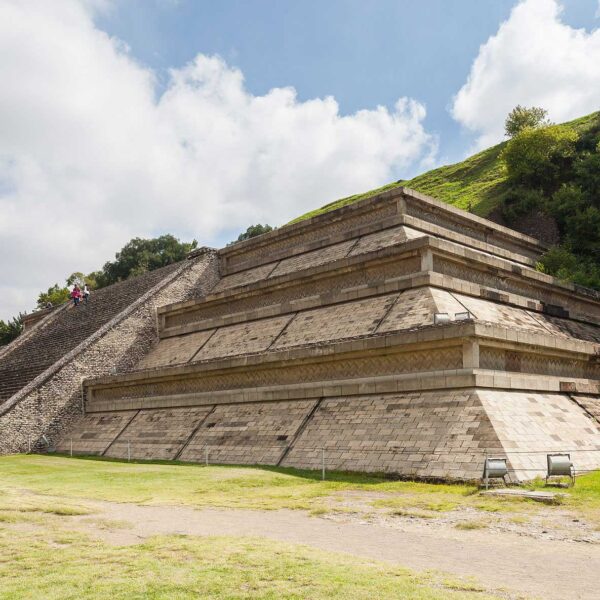
Archaeological Sites in Puebla
Puebla has a great pre-Hispanic heritage. There are diverse archaeological zones, and some of the most outstanding are: Cholula, one of the most important ceremonial centers; Cantona, known worldwide as the splendour of Mesoamerican urbanization; and Yohualichan, that means “The house of the mysterious night” at the Sierra Norte.… Read More
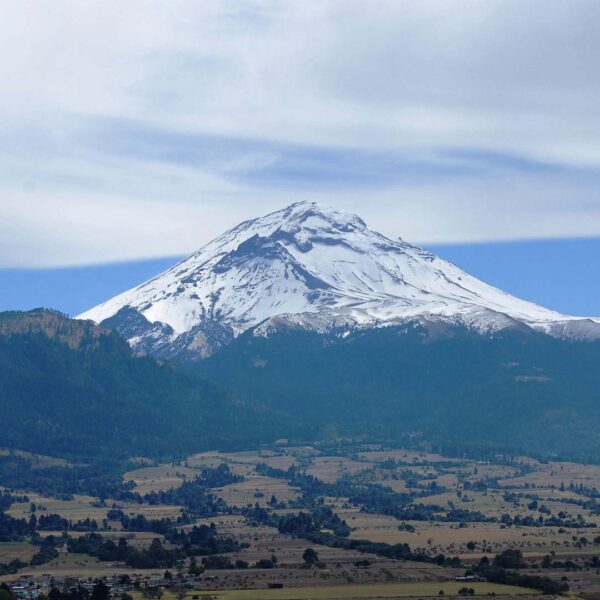
Ecotourism and Adventure in Puebla
Due to the natural richness of the state, there are a wide selection of activities for people who love nature, such as mountain climbing, photography, horseback riding, hiking, fishing, rafting (through rapids) speleology, hang gliding (delta and paraglide) cycling, camping and rappel among others.… Read More
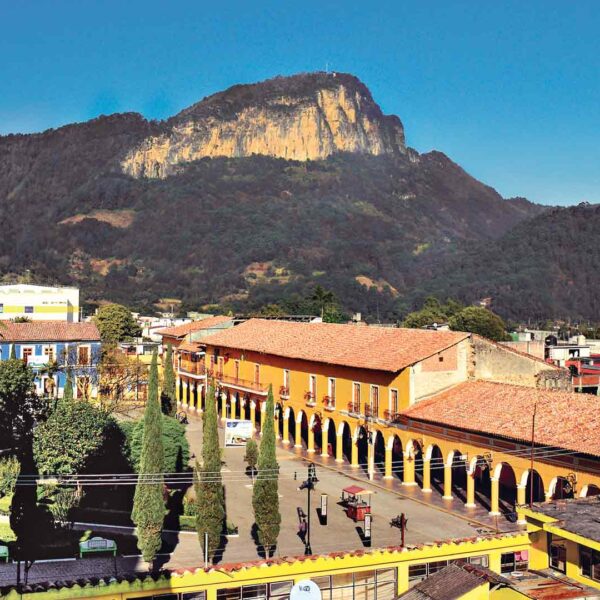
Magical Towns in Puebla
Among the ideal tourist places to organize a weekend getaway, the Magical Towns of Puebla stand out. Each one has its own personality and activities for all tastes. You can stroll through its streets and admire its architecture rich in history. In each one you will find many options to try local cuisine and classic Poblano dishes. Do not forget to visit its markets and fill yourself with colors, flavors and crafts, from the famous Puebla talavera to indigenous artistic expressions. And if you prefer contact with nature, you also find options to quench your thirst for adventure.… Read More

Gastronomy of Puebla
The gastronomy of Puebla is internationally recognized for its flavor, its variety and its history. It is the result of the fusion of the culinary tradition of Mexican origin (prior to the colonial period) and the influences of Spanish, French and Arabic cuisine. Each of them contributed not only ingredients – such as tomato, onion, oil – but also utensils and processes that enriched the culinary offer of the state and considered one of the most representative in Mexico.… Read More
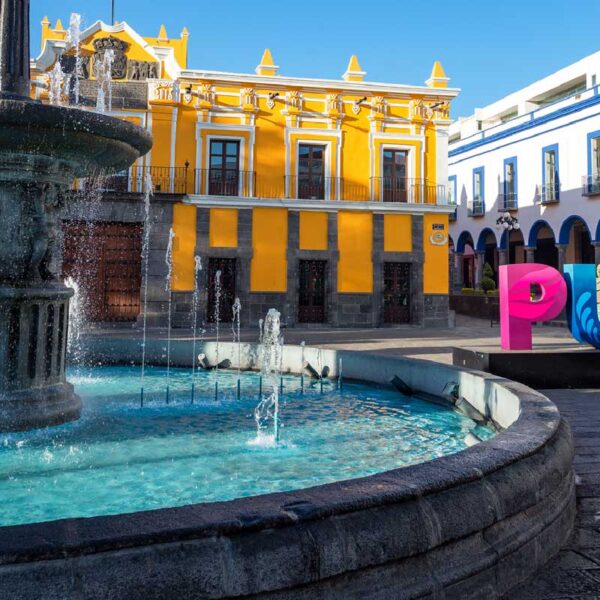
Puebla City
The City of Puebla is a place full of culture, charm, traditions, history, beliefs… The magnificent trace of the city has made up the legend that were the angels who did it. Puebla is a jewel of world’s architecture and has been able to adapt spaces and fill them with life and movement. It is located 85 miles away from Mexico City (CDMX). Modern highways communicates with all the main cities around the country. It has an International Airport, named Hermanos Serdán, as well as an important Bus Station. … Read More
Guided Tours in PUEBLA
Flights & Hotels in PUEBLA
More Tourist Attractions in MEXICO

Beaches
On the Beaches of Mexico you can immerse yourself in the intense blue ocean of the Pacific bays, sunbathe on the shore of the warm and transparent waves of the Caribbean Sea in Quintana Roo or even rest on the beautiful coasts of the Gulf of Mexico. Mexican beaches hide wonderful secrets for the traveler. By visiting them, in addition to enjoying the excellent climate and water activities, you can discover splendid archaeological sites and interesting colonial cities without traveling long distances.… Read More

Traditions in Mexico
It is practically impossible to make a meticulous, and above all, accurate selection of the places to visit in Mexico. Each place that our country houses is unique and beautiful in its own way. Mexico, with its nearly 2 million km², has a large number of scenarios to offer, as well as endless activities to do. Do not lose your way and enter the places to visit in Mexico. In Mexico, apart from the beaches and its famous archaeological sites, there are many other really interesting sites and activities that you should know. In the surroundings of the main cities you will find places full of culture and tradition, where you can spend relaxing, interesting and fun vacations. On your trip through Mexico you cannot stop obtaining souvenirs, the crafts that are made here are of the highest quality and recognized worldwide. A shopping tour cannot be missed.… Read More

Archaeological Sites
The Archaeological Zones are the cultural past of every Mexican. You will be amazed at the ambient, nature and the environment that surrounds them. Climbing to the top or being around it will take us back in time to admire every detail. México is a country of culture and traditions, many of which we have inherited from the pre-Hispanic inhabitants of this vast territory, although it is true that there were more settlements in the central and southern part of the country, it is also possible to find some archaeological remains in the north.
… Read More

Ecotourism and Adventure
Mexico is one of the best countries for Ecotourism as it has a great variety of flora and fauna, as well as a large number of refuges for extraordinary species. You can enjoy recreational activities of appreciation and knowledge of nature through contact with it, such as: stargazing, observation of natural attractions, wildlife and bird watching. Throughout México there are more than 176 protected natural areas, 5 of them considered by UNESCO as Natural Heritage of Humanity. Just for this and much more, we believe that Mexico is a Paradise for Ecotourism.… Read More

Magical Towns
A Magical Town is a place with symbols and legends, towns with history that in many cases have been the scene of transcendent events for our country, they are places that show the national identity in each of its corners, with a magic that emanates from its attractions ; visiting them is an opportunity to discover the charm of Mexico. The Magical Towns Program contributes to revalue a set of populations in the country that have always been in the collective imagination of the nation and that represent fresh and varied alternatives for national and foreign visitors. A town that through time and in the face of modernity, has conserved, valued and defended its historical, cultural and natural heritage; and manifests it in various expressions through its tangible and intangible heritage. A Magical Town is a town that has unique, symbolic attributes, authentic stories, transcendent events, everyday life, which means a great opportunity for tourist use, taking into account the motivations and needs of travelers.… Read More

Capital Cities
Folklore, gastronomy, literary culture, art and exhibitions, is what you will find in the capitals of the states of Mexico. To the north, colonial Mexico, Puebla, Guadalajara, Guanajuato, the Sonoran desert and the California peninsula. To the east Veracruz and the gulf. To the west Acapulco, Oaxaca and Tuxtla Gutiérrez. And to the south the Riviera Maya and the pyramids of Chichén-Itzá, Tulúm and Cobá in Yucatán, Palenque in Chiapas, the cenotes, and the Central American jungles.… Read More

Gastronomy
The Gastronomy of Mexico has a great diversity of typical dishes, which is why it was recognized by UNESCO as Intangible Heritage of Humanity. The basic and representative ingredients of Mexican dishes are: corn, coriander, chili, beans, piloncillo, nopal and tomato. Mexican cuisine is also characterized by its sauces, which serve as an accompaniment to traditional dishes, prepared based on spices.… Read More

States Of Mexico
Mexico has an incredible diversity of landscapes, where the beauty of its beaches, internationally recognized, stands out. In its vast territory of coasts, there are beaches of unparalleled beauty, and colorful landscapes. A large network of first-class hotels and tourist services is available to visitors to these beaches. Mexico is also mystical places, dotted with archaeological testimonies inherited from its original inhabitants. Monuments made by the Mayas, Aztecs and Toltecs are located in magical landscapes, like lighthouses in an ocean of natural beauty. They offer visitors buildings that tell their history, and museums that collect their cultural heritage. And that keep alive ancestral traditions, in ceremonies and festivals, where you can enjoy cultural activities and entertainment.… Read More

